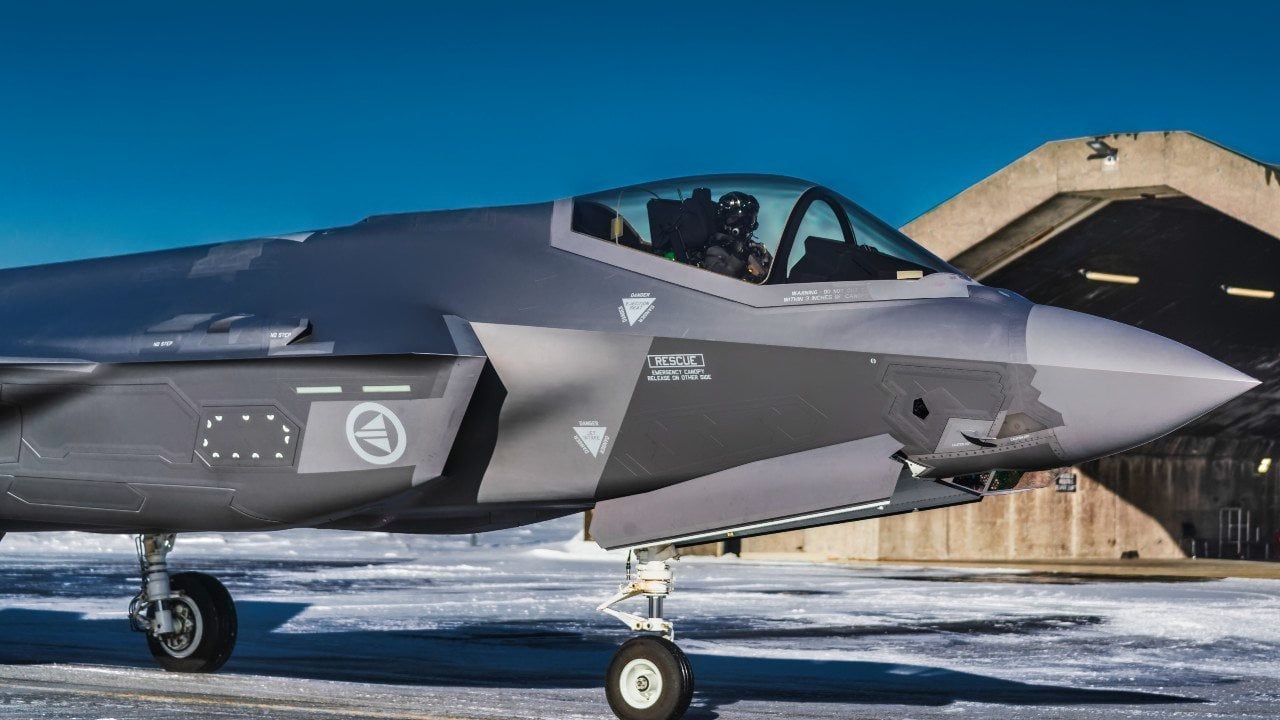Time to Send F-35 Fighters to Ukraine?
Ukraine should not expect F-35 stealth fighter donations anytime soon. The F-35 is expensive – almost twice as much per unit as an F-16 (about $100 million v. $63 million).
Why Don't Wend Send the F-35 Stealth Fighter to Ukraine? Ukraine has defied expectations, staunchly holding off the Russian invaders for two years. And while the Ukrainians have fought doggedly, their resistance is dependent, in large part, upon the donation of Western cash, intelligence, and military equipment.
Frankly, the Ukrainians are unlikely to have been able to resist the Russian advances without the steady influx of military assistance from the NATO powers, most especially the United States.
To date, the West has provided Ukraine with vital equipment, including surface-to-air missile systems like the PATRIOT and anti-tank equipment like the FGM-148.
Ukraine is eagerly awaiting the donation of fourth-generation F-16 fighters, which would help mitigate the Russian advantage in the skies above Ukraine. But the donation of F-16s raises questions: why donate F-16s when superior, fifth-generation fighter technology, i.e., the F-35 Joint Strike Fighter, is available?
Answers may range from the practical to the abstract, but the simple fact is that the US is unlikely to donate F-35 to Ukraine.
Ukraine would benefit from the F-35 Stealth Fighter
Ukraine surprised the world in denying their airspace to the Russians. Yet, the Russians hold a distinct advantage in the skies, running their Su-35s and MiG-31s up against the Ukrainian’s Su-27s and MiG-29s.
The Russian aircraft is newer, with higher-powered radar and more sophisticated missiles. The advantage here is that the Russian aircraft can locate and engage with Ukrainian aircraft further away than the Ukrainian aircraft.
So, in effect, the Russians can engage the Ukrainians from beyond the range of the Ukrainian fighters. In contrast, the Ukrainians must sneak within the range of the Russians to engage – a dangerous place to be.
Ukraine has compensated their weaker aircraft with donated surface-to-air systems, like the IRIS-T, NASAMS, and PATRIOT – but the SAMs are just a stopgap until Ukraine can receive more capable fighters.
The inbound F-16s, with advanced radar and modern missiles like the AIM-120, would offer Ukraine a significant upgrade over their Su-27s and MiG-29s, allowing the Ukrainians to engage Russian aircraft from greater distances.
But the F-16 is a fourth-generation fighter, first built in the 1970s and no longer on par with today’s cutting-edge aircraft. So, why not give the Ukrainians today’s cutting-edge aircraft?
Fifth-generation technology to the Ukrainians?
Amongst the NATO powers, only America has developed fifth-generation technology – the F-22 and the F-35.
The F-22 Raptor remains the world’s preeminent air superiority fighter – but America has never exported the F-22 and never will. Production has already ceased on the F-22 and the US will hold onto each of their remaining F-22s.
The F-35 Lightning II, on the other hand, has been exported to US allies around the world, including NATO nations. One might expect a US-backed Ukraine to receive a jet that the US has already exported to places like Singapore and Norway – especially given how helpful the F-35 would be to the Ukrainian’s cause.

Consider the effectiveness of the F-16: “Kyiv’s allies hope the [F-16] can push Russian aircraft farther from the frontlines, target radar transmitters more effectively and hunt down more cruise missiles,” Reuters reported. “But [the F-16s] will address a problem that has persisted from the start of the invasion I February 2022: Russia’s more modern combat aircraft have been difficult for Ukraine’s military to counter with its own aging fighters.”
Now, consider that the F-35 is more effective than the F-16. Indeed, concerning radar, situational awareness, data fusion, and interconnectivity, the F-35 is the world’s standard-bearer – offering an edge over Russian Su-35s and MiG-31s.
Don’t expect an F-35 donation to Ukraine
Ukraine should not expect F-35 donations. For one, the F-35 is expensive – almost twice as much per unit as an F-16 (about $100 million v. $63 million).
And the F-35 program, in total, is the most expensive weapons program in human history ($1.7 trillion).

American taxpayers, fatigued from bankrolling a foreign conflict that is entering its third year, are unlikely to support the donation of a $100 million dollar aircraft from a $1.7 trillion dollar program.
What Happens if Russia Kills an F-35?
The US may be hesitant to send one of their preeminent weapons systems into combat, at the hands of relatively green, foreign pilots, against one of America’s primary rivals. A downed F-35 would be inevitable. And a downed F-35 could provide Russia with the chance to reverse engineer the fifth-generation jet.
Granted, Russia already has a fifth-generation fighter design (the Su-57, of which only ten or so exist), but any insights into the F-35 would be a win for Russia.
A Weak Russia
Lastly, consider that the longer Russia is engaged in a conflict, the weaker Russia becomes with respect to military resources and political capital.
A weaker Russia benefits the US. So, logically, it follows that the US would prefer for Russia to remain engaged in conflict indefinitely.

So, providing Ukraine with game-changing weapons systems may not ultimately be in the US’s best interest. Now, that’s a somewhat abstract, hypothetical, and cynical take – and may not reflect the strategy of the US war planners. But it’s something to think about.
Regardless, don’t expect the Ukrainians to receive any F-35s.
About the Author: Harrison Kass


